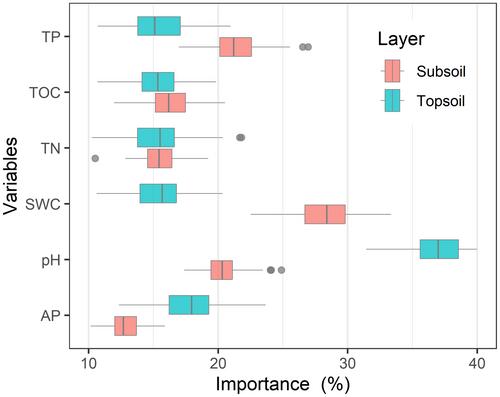Power law in species–area relationship overestimates bacterial diversity in grassland soils at larger scales
Abstract
Aim
Species–area relationships (SAR) are widely utilized for estimating the species richness and its spatial turnover across various scales. Despite the prevalent characterization of SAR using the power law in many microbial community studies, its efficacy remains unvalidated. This study aims to characterize the microbial SAR and its mechanisms in alpine grassland soils on the Qinghai-Tibet Plateau (QTP).
Location
Qinghai-Tibet Plateau, China.
Time Period
August 2014.
Major Taxa Studied
Soil bacteria.
Methods
Soil samples were collected from five alpine grassland sites on the QTP. Employing a nested sampling strategy at each site, soil samples were collected in plot sizes ranging from 0.5 × 0.5 m2 to 2048 × 2048 m2. Soil bacterial communities were analysed by sequencing 16S ribosomal RNA gene amplicons using an Illumina MiSeq.
Results
The bacterial SAR exhibited a logarithmic power law (R2: 0.952–0.999), outperforming the power law (R2: 0.701–0.852). Consequently, the most widely adopted power law led to an overestimation of species richness by up to 15.07% in areas >256 × 256 m2, and the regional maximum theoretical richness based on Chao1 by up to 9.88%. Mechanistically, the passive sampling hypothesis was refuted through the rarefied species richness analysis, and the disproportionate effect hypothesis was rejected based on analyses of the effective numbers of species number conversions for the probability of interspecific encounters (SPIE). Notably, Pearson and multiple linear regression analyses indicated that the spatial turnover of bacterial richness was determined by the environmental heterogeneity (R2: 0.855–0.999), rather or better than environmental variables themselves, supporting the ‘environment heterogeneity hypothesis’.
Main Conclusions
Soil bacterial SAR in alpine grasslands exhibited a logarithmic power relationship. Spatial turnover was primarily governed by the environmental heterogeneity. In contrast, the traditional power law leads to an overestimation of soil bacterial diversity at the regional scale.


 求助内容:
求助内容: 应助结果提醒方式:
应助结果提醒方式:


